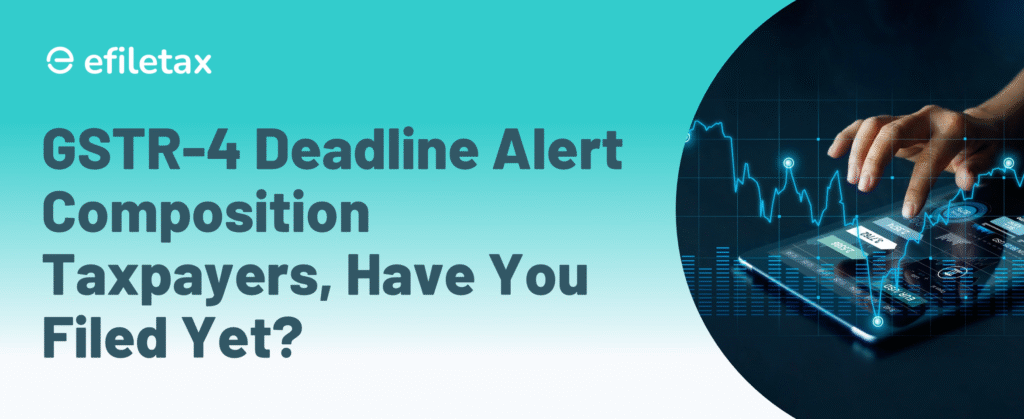
Summary
GSTR-4 is the Annual Return that composition taxpayers under GST must file by 30th April following the financial year. This blog simplifies due dates, eligibility, late fees, and step-by-step filing.
GSTR-4 Annual Return Filing What Composition Taxpayers Must Know
If you’re registered under the GST Composition Scheme, you are required to file GSTR-4—an Annual Return summarising your turnover, tax paid, and other details.
The focus keyphrase here is: GSTR-4 Annual Return
Let’s break it down simply for business owners and tax practitioners.
GSTR-4 Due Date for FY 2024–25
The GSTR-4 Annual Return for FY 2024–25 must be filed on or before 30th April 2025.
Source: Rule 62(1)(ii) of CGST Rules, 2017
🔗 GST Portal Notification – GSTR-4
Who Should File GSTR-4?
You must file GSTR-4 if:
- You opted for Composition Scheme under Section 10 of the CGST Act
- You’re a service provider under Notification No. 2/2019-CT (Rate)
- You were under the scheme for any part of the financial year
Even if there were zero outward supplies, filing is mandatory.
What GSTR-4 Includes
- Turnover details (taxable and exempt)
- Inward supplies on which tax is paid under RCM
- Tax payable and tax paid summary
- Late fees (if applicable)
- Additional liability (if any)
GSTR-4 does not require invoice-wise details.
Consequences of Late Filing
If you miss the due date:
| Delay | Late Fee (Per Day) | Maximum |
|---|---|---|
| CGST | ₹50 | ₹500 |
| SGST | ₹50 | ₹500 |
| Total | ₹100/day | ₹1,000 |
If there are no outward supplies, the late fee is ₹20/day (₹10 CGST + ₹10 SGST).
How to File GSTR-4 (Step-by-Step)
- Login to GST Portal: www.gst.gov.in
- Go to Returns Dashboard → Select FY 2024–25
- Choose GSTR-4 Annual Return
- Fill in details:
- Outward/inward supply summary
- Liability details
- Preview and validate
- Submit and File with DSC/EVC
- Download filed return for records
Expert Tip: Auto-Filled Data Isn’t Final
Efiletax experts suggest:
“Don’t blindly rely on system-populated values. Cross-check turnover, especially if you changed schemes mid-year. You may be liable for extra tax if figures mismatch.”
Composition vs Regular GST: Quick Comparison
| Feature | Composition Scheme | Regular GST Scheme |
|---|---|---|
| Filing Frequency | Annual (GSTR-4) + CMP-08 | Monthly/Quarterly (GSTR-1, GSTR-3B) |
| Tax Payment | Quarterly (via CMP-08) | Monthly |
| Input Tax Credit | Not Allowed | Allowed |
| Invoice Type | Bill of Supply | Tax Invoice |
| Compliance Burden | Lower | Higher |
🔄 Internal Link
For quarterly tax payment, check our blog on 👉 How to file CMP-08
FAQs on GSTR-4 Annual Return
Q1. Is GSTR-4 applicable for taxpayers who switched to regular GST during the year?
A: Yes, you must file GSTR-4 for the portion of the year under the Composition Scheme.
Q2. Can GSTR-4 be revised?
A: No, once filed, GSTR-4 cannot be revised. So verify before submission.
Q3. What if no business was done during the year?
A: You must still file a Nil GSTR-4 return to avoid penalties.
Q4. Is DSC mandatory for filing GSTR-4?
A: Not mandatory for proprietorships or individuals; EVC is allowed.
Final Word
GSTR-4 Annual Return is a must for all composition taxpayers. Non-compliance can lead to late fees and block your ability to generate e-way bills. If you’re unsure, let experts handle it for you.